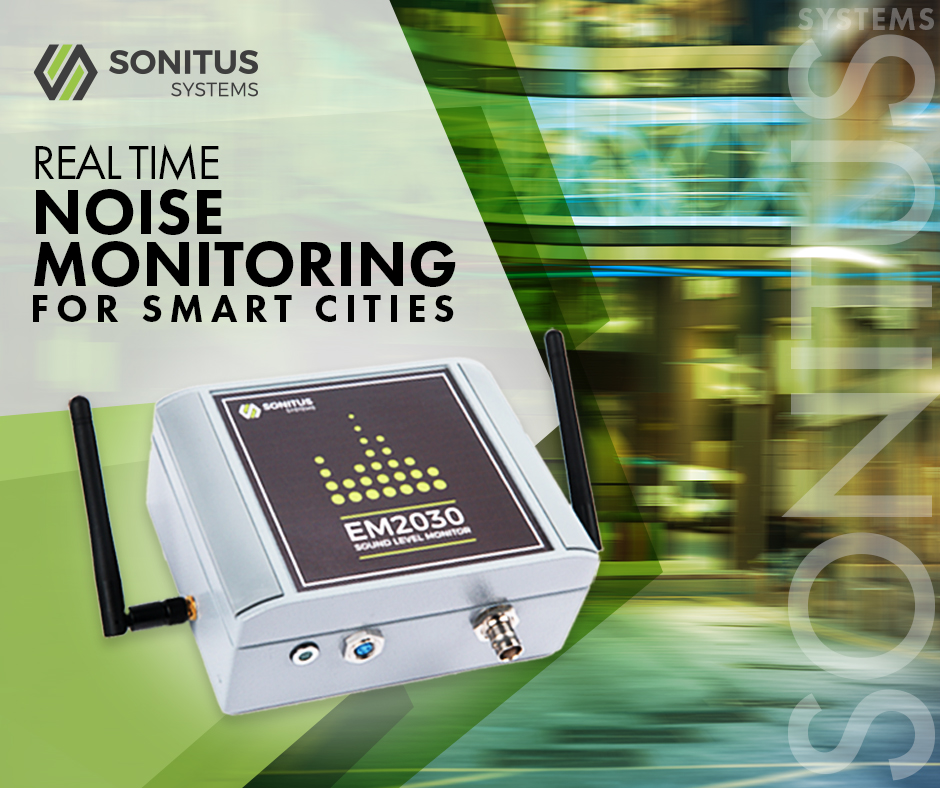As cities around the world start to tentatively re-open, it is inevitable that noise levels will increase alongside these increased levels of human, traffic and industrial activity.
As cities around the world start to tentatively re-open, it is inevitable that noise levels will increase alongside these increased levels of human, traffic and industrial activity. This makes the city, any city, a very different place to what it was two months ago. In fact, during the shutdown, there was a noticeable change in the soundscape of urban life, which we wrote about here: What the Pandemic Sounds Like.
Noise can be an annoyance, more importantly, excessive noise has been recognised as a very real threat to the health and daily lives of residents and visitors to a city. As such, it is one of the environmental factors monitored by smart cities all around the world. Last week we highlighted this trend in an article titled Noise and the Smart City Agenda.
For this week, it might be interesting to look under the hood and explore the role of acoustics experts and traditional sound level meters in the real-time monitoring of noise in a so-called smart city.
Urban sound monitoring can be approached in many different ways and using a range of instruments. The more sensitive and controversial the site is, the higher the grade of instruments that are required. Smart city projects are a mix of technology, policy, budgets and politics. As mentioned here previously, evolving technology including crowdsourced sensing applications allow citizens to capture sound level measurements using an app on their smartphones and from there, the recording can be uploaded to an online platform. Low cost electronics websites also provide Citizen Kits that can be installed anywhere to report noise levels. The technology used is often MEMS or electret microphones built into a discreet box that can be mounted on a wall or lamp post.
Many monitoring solutions monitoring focus on communications technology instead of acoustic parameters where there is no mention of measurement specifications. This raises the question of accuracy in terms of the measurements being recorded.
How accurate is accurate enough?
Where the accuracy of apps on mobile devices or so-called citizen kits are potentially imperfect or certainly less reliable than products that are specifically and commercially designed for industrial noise monitoring use, it raises an important question: How accurate is accurate enough? This will likely vary according to the intended use, however, in the context of a smart city, the intended use will likely be to help project stakeholders improve their decision making skills. Projects such as SONYC (Sounds of New York City) use inexpensive sensors that are working alongside artificial intelligence data processing tools to understand the soundscape in order to develop a better understanding of noise sources. This also means that, using their smartphones, the public can not only detect noise level but also what is making the noise.
When it comes to noise monitoring, there is a demonstrable lack of standardisation across smart city projects. And often the individual projects lack any link to measurement standards in the presentation of results. Compliance with BS EN 61672 may not be the project aim and issues like calibration and long-term consistency may be of no concern to smart city participants.
Noise Mapping
Noise mapping – the generation of large amounts of sound level measurements over long periods of time – is an ever-increasing field of acoustics and there have been some interesting developments in the techniques and potential use cases for this.
The Dynamap project aims to validate and enhance existing urban noise maps by producing dynamic/real-time noise maps, using data gathered from low cost sensors. But could the data produced by a myriad of smart city projects be relied upon for developing noise mitigation strategies?
Can a large volume of less accurate measurements give a good long-term average?
While we do not have the answer to all these questions, we understand the importance of asking them as these globally accessible networks of noise monitors will continue to grow and the data will certainly be used by local stakeholders. The treatment of this data and the link to industry standards might be the key to unlocking that potential.
Within the regulated sectors of policy and compliance the use of high-grade instrumentation is almost certainly needed. The expertise of the acoustics professional is critical in steering the technology choice, installation and the analysis of the data. This will enable and empower cities to address noise issues more effectively; however, for community led initiatives, outside of the regulated space, there is far less scope for the acoustic professional to influence any instrumentation choices or drive standards in measurements. Perhaps a more effective role for acoustics experts is to provide education on sound levels and noise which can be used to frame the data coming from various monitoring systems. Putting the big data generated from these connected cities into context can allow citizens to make informed decisions, even if the underlying measurements are less than ideal. Initiatives like the IoA STEM programme and 2020 Year of Sound aim to broaden awareness of acoustics and spread knowledge. Perhaps it is here that the acoustics expert is most likely to ensure a “smart” outcome from city sensing projects?
While there is no doubt that widespread city noise monitoring will happen without the input of acoustic professionals, there is still no substitute for sound advice.
Sonitus Systems supply robust and reliable sound level monitoring equipment globally from their base in Dublin. Their award-winning products and services allow users to easily monitor and assess noise levels in any scenario to ensure compliance. For more information, call the Sonitus Systems team on +353 1 6778443 or email info@sonitussystems.com
